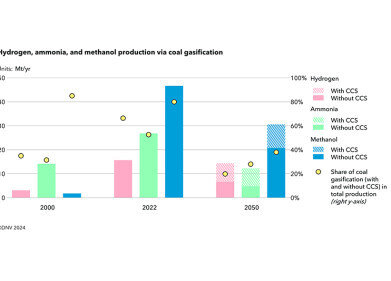Green Energy
Could the Earth's Infrared Radiation be the Next Big Green Energy?
Jan 19 2015
Clean, green, renewable energy has been a hot topic over the last decade, with scientists, research teams, and governments worldwide working towards establishing sustainable energy sources which will avoid further depletion of fossil fuels and damage to the environment.
Taking on the challenge of working out how to produce clean, renewable energy at night, a team at the Harvard School of Engineering and Applied Sciences published their leading idea involving harnessing the Earth's infrared energy in the Proceedings of the National Academy of Sciences in March 2014.
In theory, it's possible for energy to be generated whenever there is a temperature difference, which includes the infrared heat radiated back from the Earth's surface to space at night.
Dr Steven J. Byrnes, lead author of the publication, said, "Sunlight has energy, so photovoltaics make sense; you're just collecting the energy. But it's not really that simple, and capturing energy from emitting infrared light is even less intuitive."
Cloud coverage affects the infrared, and so Dr Byrnes and his colleagues have been focusing on desert conditions where cloud coverage is scarce.
How can we generate energy from the Earth’s infrared radiation?
Co-author Professor Frederico Capasso said, “It’s not at all obvious, at first, how you would generate DC power by emitting infrared light in free space toward the cold. To generate power by emitting, not by absorbing light, that's weird.”
However, the team at Harvard came up with two concepts in order to generate energy from the Earth's infrared.
The first approach would consist of two plates: a hotter plate on the ground, and a 'cold' plate just above it. While the temperature difference between the two plates would be extremely small, the cold plate would be made of a material that cools efficiently, thus radiating the heat it absorbs from the hot plate (coming from the Earth's surface) as soon as it gets it. If the cold plate can be kept cool, generating a few watts per square meter should be possible.
Byrnes said, “This approach is fairly intuitive because we are combining the familiar principles of heat engines and radiative cooling.”
The second concept is a smaller and far more promising device than the first, and consists of a microscopic 'rectenna', an antenna connected to a diode. Usually, incoming radiation would induce an AC voltage across the antenna, but the antenna would, in this case, be positioned to radiate the Earth's infrared radiation towards the sky. As the electrons cool, a current is forced to the antenna from the warmer diode, thus acting as a resistor and producing a voltage.
The team also discovered that this idea had been considered by J.B. Gunn, the inventor of the Gunn diode used in police radars in 1968, but had been buried in literature and long forgotten.
In principle, these proof of concepts are a promising start to utilising infrared radiation. "Now that we understand the constraints and specifications, we are in a good position to work on engineering a solution," said Byrnes.
Whatever next?
It is remarkable how many unlikely sources there are for green energy. For example, did you know that used cigarette butts are being turned into supercapacitors or that pistachios could power a city? Crazier still, did you know that there is even a bus fuelled by poo in the UK?
Events
May 05 2024 Seville, Spain
May 13 2024 Munich, Germany
May 23 2024 Beijing, China
May 23 2024 Beijing, China
Jun 10 2024 Algiers, Algeria














